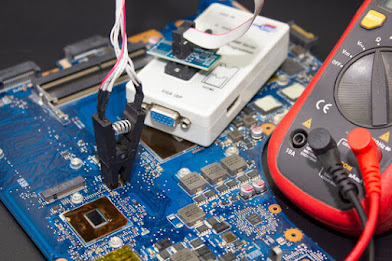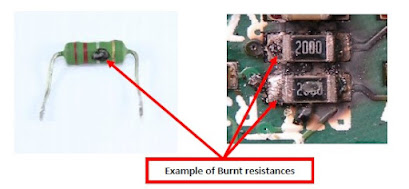How to Easily Identify LAN Cable Settings, Crimp RJ45 Cables, and Do's & Don'ts
How to Easily Identify LAN Cable Settings, Crimp RJ45 Cables, and the Do’s & Don’ts
Introduction: Whether you’re setting up a home network, repairing cables in an office, or just learning computer networking basics, knowing how to identify LAN cable settings and properly crimp RJ45 connectors is an essential skill. Many people struggle with unreliable connections and poor network speeds simply because their cables are not prepared correctly. In this guide, we will explain in detail how to recognize LAN cable wiring standards, step-by-step crimping instructions, and the do’s and don’ts to ensure your RJ45 connections are strong and reliable.
Understanding LAN Cable and RJ45 Connectors
Before diving into crimping, let’s understand the basics:
- LAN Cable: Local Area Network (LAN) cables are Ethernet cables used to connect computers, routers, switches, and other devices within a network. Common types include CAT5, CAT5e, CAT6, and CAT7.
- RJ45 Connector: This is the plastic connector at the end of the cable that plugs into your router, switch, or PC network port.
- Crimping Tool: A hand tool used to attach RJ45 connectors to Ethernet cables.
LAN Cable Wiring Standards
There are two main wiring standards for Ethernet cables: T568A and T568B. Both are widely used, but you must be consistent on both ends of the cable to avoid connection issues.
Color Codes for T568A
- White/Green
- Green
- White/Orange
- Blue
- White/Blue
- Orange
- White/Brown
- Brown
Color Codes for T568B
- White/Orange
- Orange
- White/Green
- Blue
- White/Blue
- Green
- White/Brown
- Brown
Difference Between Straight-Through and Crossover Cables
LAN cables are typically wired in two configurations:
- Straight-Through: Both ends are wired with the same standard (T568A–T568A or T568B–T568B). Used for connecting computers to network switches, routers, or hubs.
- Crossover: One end is wired T568A and the other T568B. Used for connecting similar devices directly (e.g., PC to PC, switch to switch without uplink port).
Step-by-Step Guide: How to Crimp RJ45 Connectors
Follow these steps carefully to ensure a perfect crimp:
- Prepare Your Tools: You will need a crimping tool, RJ45 connectors, and the Ethernet cable (CAT5e or CAT6).
- Cut the Cable: Use the crimping tool to cut the cable cleanly, ensuring there are no frayed wires.
- Strip the Cable Jacket: Strip about 1 inch (2.5 cm) of the cable sheath to expose the twisted pairs of wires.
- Untwist the Wires: Carefully untwist the pairs and straighten them out. You should have 8 separate wires.
- Arrange Wires by Standard: Line them up in the correct order (T568A or T568B).
- Trim the Wires: Cut the wires evenly to about 0.5 inches (1.3 cm) in length.
- Insert into RJ45 Connector: Slide the wires into the RJ45 connector with the clip facing down. Ensure each wire goes into its correct slot.
- Crimp the Connector: Place the connector into the crimping tool and squeeze firmly to lock the wires into place.
- Test the Cable: Use a LAN cable tester to verify the connectivity and correct wiring.
Do’s and Don’ts of RJ45 Crimping
The Do’s
- ✅ Always use the correct wiring standard (T568A or T568B) consistently.
- ✅ Use a quality crimping tool designed for RJ45 connectors.
- ✅ Test every cable with a LAN tester before using it.
- ✅ Keep cable twists as close as possible to the connector to reduce interference.
- ✅ Trim wires evenly to avoid misalignment inside the connector.
The Don’ts
- ❌ Don’t mix wiring standards on both ends unless intentionally making a crossover cable.
- ❌ Don’t untwist wires more than necessary, as it can cause crosstalk and signal loss.
- ❌ Don’t use damaged or cheap connectors, as they may break easily.
- ❌ Don’t leave too much cable jacket inside the connector — it prevents a proper crimp.
- ❌ Don’t force the cable if it doesn’t fit; check alignment instead.
Common Mistakes in Crimping RJ45 Cables
Beginners often run into these mistakes when crimping:
- Incorrect wire order, leading to failed connections.
- Wires not pushed all the way into the connector.
- Over-stripping the jacket, leaving wires exposed.
- Not testing the cable before deployment.
- Using the wrong type of cable (CAT5e vs CAT6) for the wrong environment.
Tips for Perfect Crimping Every Time
- Practice on spare cables before working on critical network setups.
- Label cables on both ends to avoid confusion during troubleshooting.
- Invest in a good LAN tester to check continuity and wiring sequence.
- Keep your crimping tool blades sharp for clean cuts.
- Follow one wiring standard (T568B is the most common worldwide).
Why Proper LAN Cable Setup Matters
A properly crimped and tested LAN cable ensures:
- Stable and fast internet speeds.
- Reduced packet loss and interference.
- Longer-lasting cables with fewer breakdowns.
- Efficient troubleshooting and reliable connections.
Advanced Considerations for Professionals
For network engineers and IT professionals, these factors also matter:
- Shielded vs Unshielded Cables (STP vs UTP): Use shielded cables in environments with high electromagnetic interference (EMI).
- Plenum vs Non-Plenum Cables: Plenum-rated cables are required in buildings with air ducts for fire safety.
- Category Rating: Use CAT6 or higher for gigabit and 10-gigabit networks.
- Patch Cables vs Permanent Links: Short patch cables are crimped manually, while structured cabling usually uses keystone jacks.
Conclusion
Crimping RJ45 connectors and identifying LAN cable settings may seem tricky at first, but with the right knowledge and tools, it becomes a simple process. By understanding T568A and T568B wiring standards, practicing proper crimping techniques, and following the do’s and don’ts, you can create reliable Ethernet cables that deliver stable network performance. Whether you are a beginner or a professional, mastering this skill saves time, money, and frustration in the long run.
Final Note: Always remember that a strong network begins with strong cables. Invest in quality tools, practice good wiring habits, and your LAN connections will always perform at their best.







Comments
Post a Comment